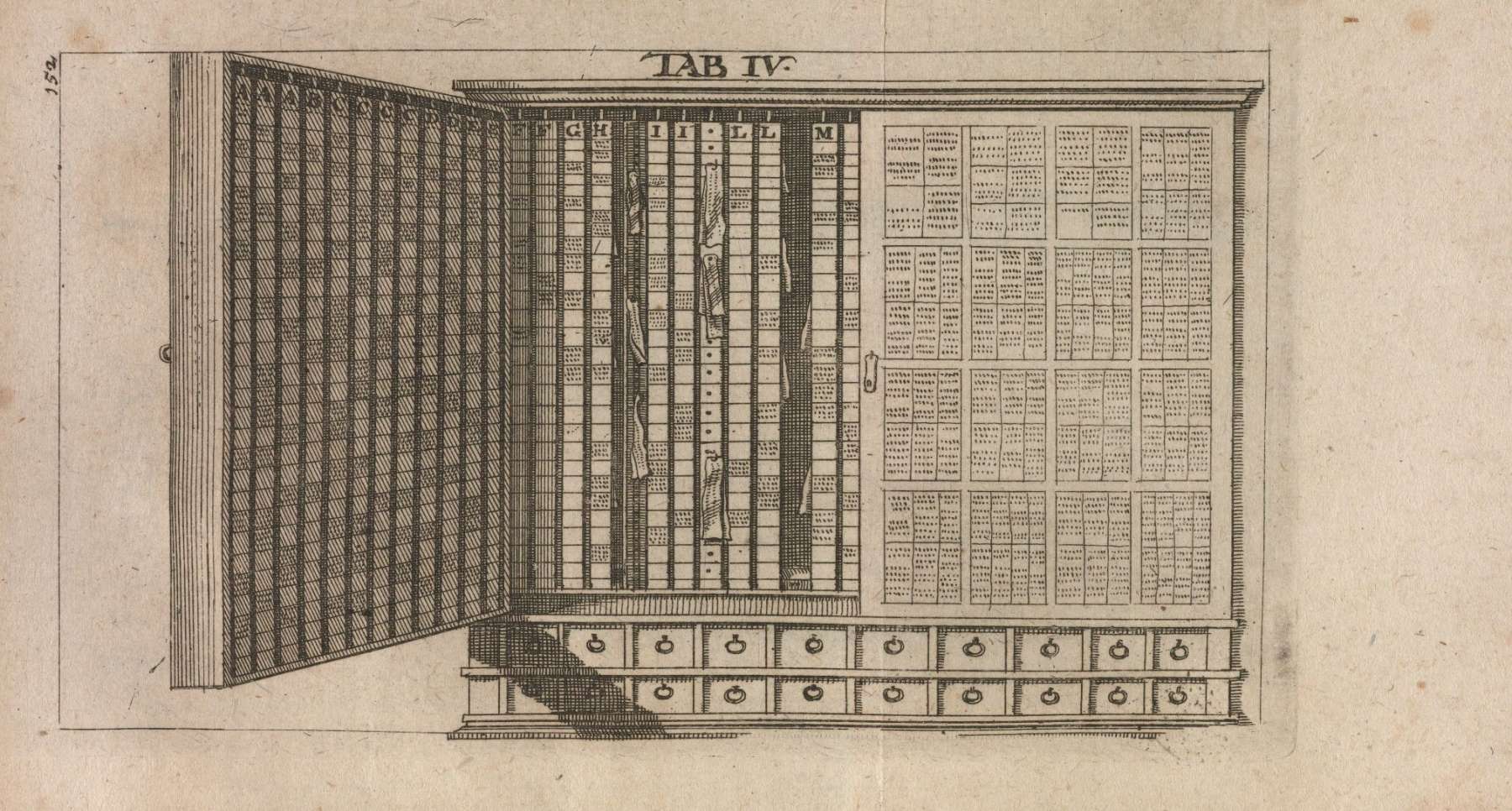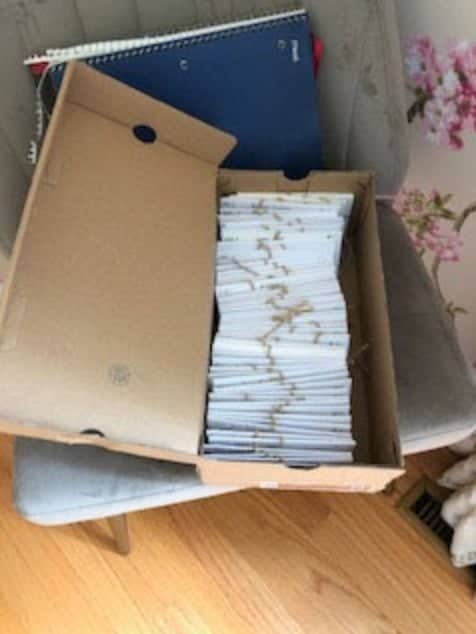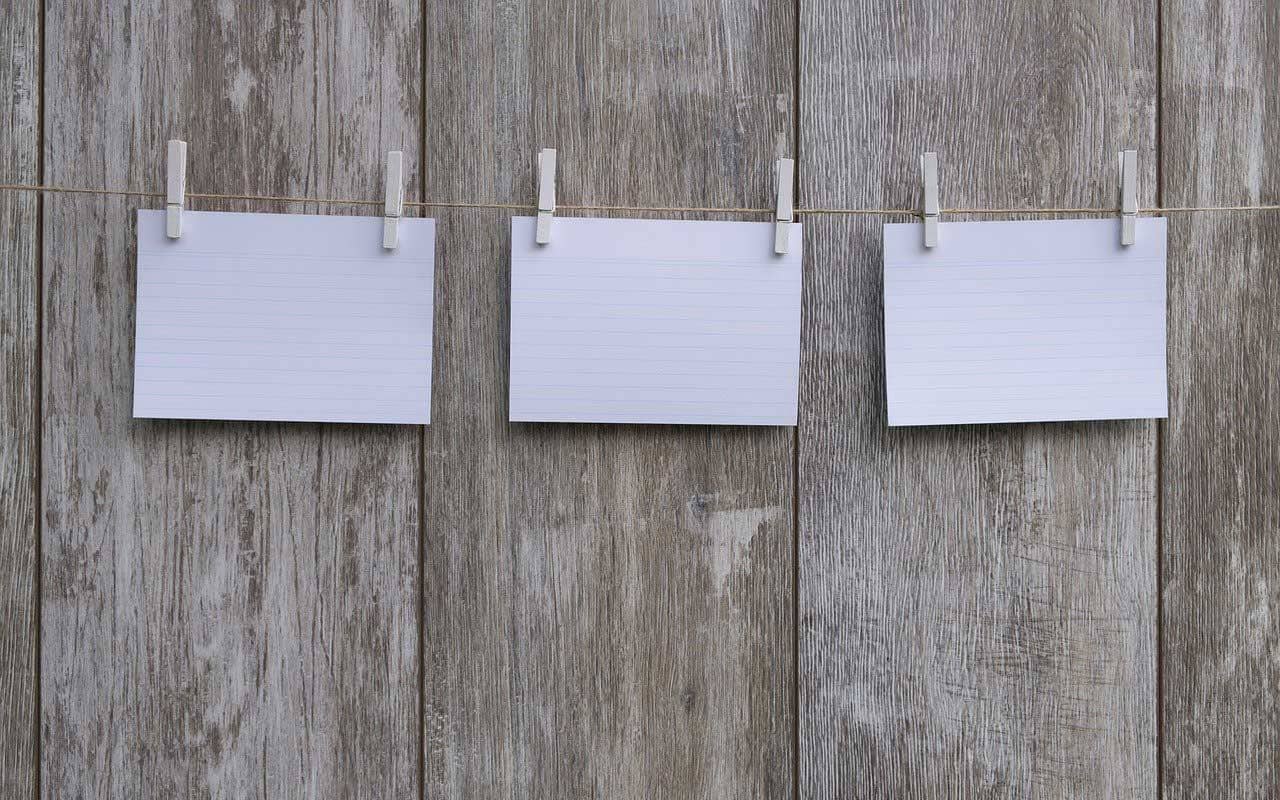Podcast: Download
Subscribe: Apple Podcasts | RSS
 I’ve been using a Zettelkasten system since 2000 when I learned it in grad school.
I’ve been using a Zettelkasten system since 2000 when I learned it in grad school.
However, I’ve noticed that many people make the approach way too complicated!
That’s a shame because the Zettelkasten method is about maximizing flexibility and increasing comprehension and recall.
So on this page, I’ll share with you the interesting history of the Zettelkasten note taking approach.
And I’ll share the incredibly simplified version I’ve used ever since it helped me earn my PhD. It’s helped me learn languages, write books and give talks from the top of my head.
Better:
I’ll also show you how you can combine the Zettelkasten approach with the Memory Palace technique.
That way, you’ll enjoy much more high-powered results even faster.
Ready?
Let’s dive in!
What Is the Zettelkasten Note-Taking Method?
Directly described, “Zettel” means note and “kasten” is the plural for box in German. So a Zettelkasten method is a means of gathering small note together in boxes. This is done not only for organizational purposes, but also to optimize a spaced repetition process that helps form memories faster.
There are many benefits of using this approach:
Flexibility and Interconnectivity: Zettelkasten notes are not isolated entities. Instead, you’re actively interacting and interconnecting the building blocks of knowledge. You are literally building a web-like network of ideas in your mind. As a result, you’re much more likely to experience holistic thinking and enjoy new insights.
Enhanced Retrieval: Zettelkasten enables efficient retrieval of information. With interconnected notes and a well-organized structure, you can easily locate specific notes, follow trains of thought, and access related concepts. This promotes effective learning and idea synthesis.
Creative Sparks: The Zettelkasten method nurtures creativity by encouraging the emergence of unexpected connections and patterns. As you interlink different ideas, innovative insights can arise, leading to novel perspectives and unique solutions to problems.
Knowledge Expansion: By actively engaging with your notes and continually adding to them, the Zettelkasten method promotes deeper understanding and comprehension while reading. It encourages active learning, visualization while reading, reflection, and the expansion of knowledge over time.
Resilience against Information Overload: The Zettelkasten method helps combat information overload. It provides a structured framework for capturing and processing information, helping you filter, prioritize, and make sense of vast amounts of knowledge.
The History of the Zettelkasten
Usually, people trace the Zettelkasten method back to the early 20th century, particularly to the sociologist and information scientist Niklas Luhmann. Luhmann sought a system that could help him manage and connect a vast amount of knowledge and accomodate random ideas.
However, it’s a misconception that Luhmann came up with the idea out of nowhere. To take just one source, Luhmann was inspired by the note taking method used by the renowned polymath and philosopher, Gottfried Wilhelm Leibniz. Stephen Wolfram has shared some images he took of Leibniz’s notes:
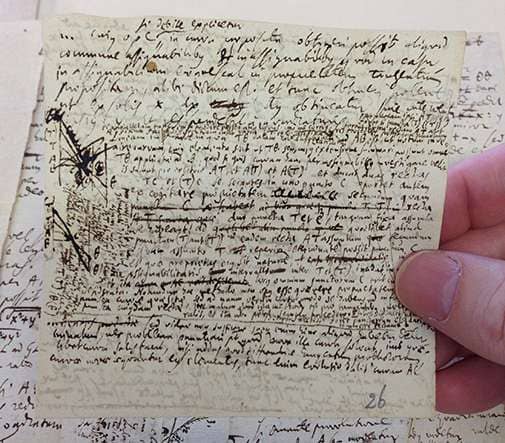
Other historical influences on Luhmann’s adaptation include Vincent Placcius‘s De arte excerpendi (the art of excerpting).
Placcius organized the notes he took onto slips for distribution in alphabetized slots in a series of wooden boxes. He was apparently legendary for having a prodigious memory.
And no doubt because using this simple note taking approach lends itself to neuroplastic changes to the brain so that it more closely resembles and operates like a dictionary or encyclopedia.
Luhmann’s Contribution to the Zettelkasten Method
Luhmann’s Zettelkasten consisted of index cards or slips of paper, each representing a distinct idea or concept. He meticulously organized and linked these notes using a unique numbering system and cross-references. This structure allowed Luhmann to explore complex topics, make connections, and more effortlessly navigate his intellectual landscape.
Over the years, Luhmann refined and expanded his Zettelkasten, ultimately creating a colossal knowledge repository that housed over 90,000 notes. The Zettelkasten became an integral part of his research, which was considered prolific. Apparently, this approach lead him to make groundbreaking contributions in sociology, systems theory, and communication studies.
The Mind-Blowing Efficiency of the Zettelkasten Structure
Now, rather describing how others have used this approach, let me share the simplified style I’ve used for two decades. I’ve cut out so much unnecessary meta-note taking and kept only the core idea. This has helped me use the Zettelkasten method faster and combine the approach with the Memory Palace technique much more directly.
But first, what are the meta-note taking structures I’ve cut out?
It’s little markers that identify what kind of note is on the card. For example, making a meta-note that says:
- Quote
- Idea
- Link
- Etc.
As you’ll see in the Zettelkasten examples I’ll share, quotes have quotation marks around them, so there’s no need to write out the word “quote.” If I want to note that one idea links to another, I’ll simple put “re” on the card, but not make that card special in any way. I’ve not found it useful to do so.
Alright, now that you know more about what I don’t do, let’s break down the exact steps I follow.
How to Use the Zettelkasten Process to Take & Memorize Your Notes
As we go through these steps, please note that there is always a certain amount of flexibility in my personal process. I’m giving you the way it normally plays out, but sometimes there are variations. For example, I might approach extracting notes from a podcast slightly differently than I would from a book.
With that in mind, everything begins with the most important step of all.
Step One: Make Sure The Source Is Worth Taking Notes From
A lot of people struggle to figure out the main points in the books they read. And no doubt. A lot of books are poorly written, which is one of the main reason it can be challenging to read as fast as you might like.
Now, there’s no perfect way to make sure a book is worth making notes from. But as a general process, I try to hit these steps in this order:
- Check out book reviews from qualified scholars
- Read reviews from the general public
- Read the conclusion of the book first to determine the importance the author gives to their own topic
- Read the most interesting or obviously important chapters first
This simple process saves a ton of time because often the conclusion of a book reveals that the author did not discover anything truly epic.
Step Two: Have Your Cards & Other Tools Ready
As I share in my detailed tutorial on how to memorize a textbook, when I read a book, I have a number in mind.
There is no way I’m going to try and extract every single last detail from a book. Why would I? That would involve copying the entire book onto cards.
Instead, I decide that I’m generally going to extract 3-5 big points from each chapter.
And to make sure I’m ready to do that, I bring enough index cards or blank flashcards with me to the library.
Also, I bring a box of sandwich bags.
Weird, right?
Well, when I lived in North America, I used to use elastic bands to gather my cards together per book.
But now that I live in Australia, I’ve found that elastic bands melt and fuse with the cards. Using plastic bags helps keep the cards nice and clean and prevents the rubber from melting into the ink and making my handwriting hard to read.
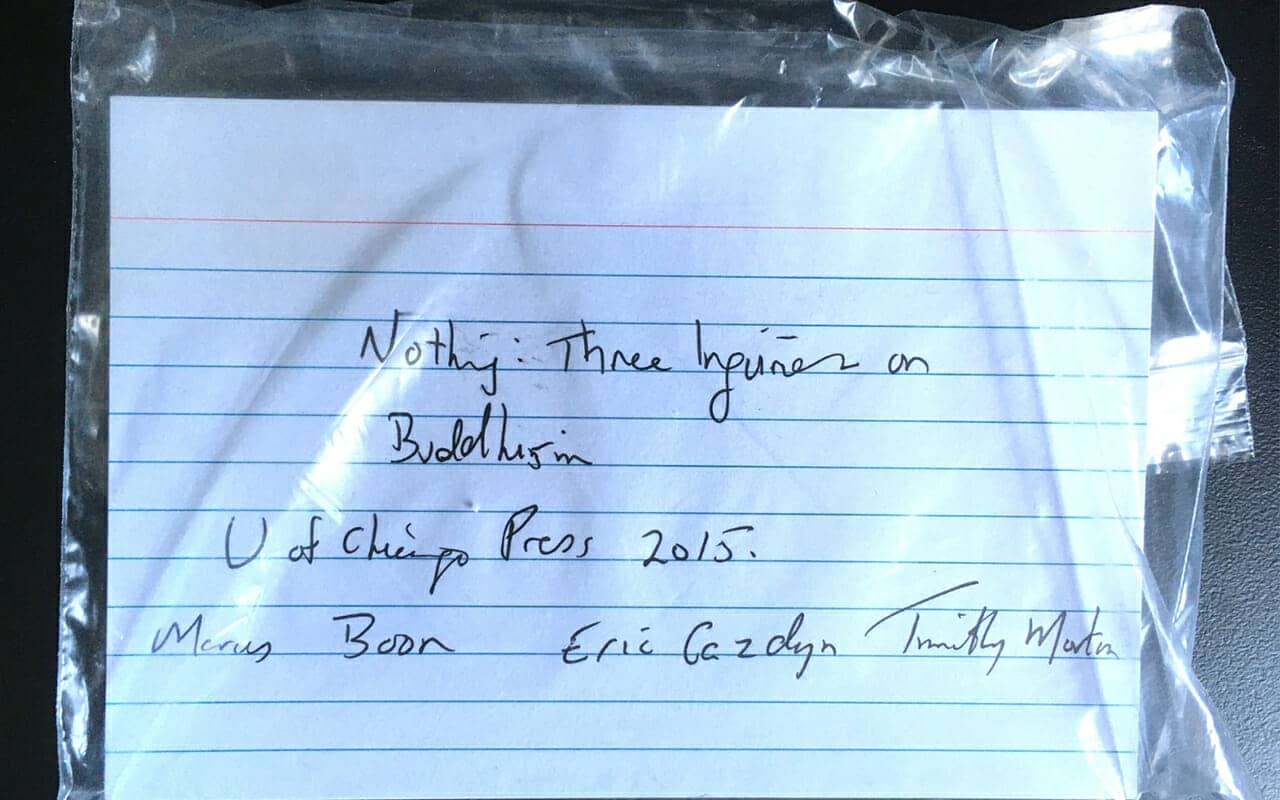
Step Three: Follow A (Mostly) Uniform Note Taking Process
Almost without variation, I start my first card for a book with the information from the colophon page: author name, book title, date of publication and publisher.
Although this information may or may not be “mission critical” to know in the future, it’s all part of knowledge and well worth recording and memorizing. Plus, facts like the publisher location and the publication date can help you rapidly assign mnemonic imagery.
For example, by noting that a book is published in 1999, I can think about Jean Chretien as the Canadian Prime Minister, and Bill Clinton as the US President. When I come across the first thing I want to memorize, I automatically have some associations to work with.
On the subsequent cards, I simply jot out quotes and big ideas. If it’s a quote, I put the quote in quotation marks. If it’s an idea or an observation, I don’t.
The bottom right corner of each card always has the book title and the page number from which I’ve drawn the quote or made the observation.
That’s it. Clear, crisp, simple and uniform.
The alternative is that if I’m taking notes from a podcast or video, there are no pages. In these cases, I’ll write out the time the point was made.
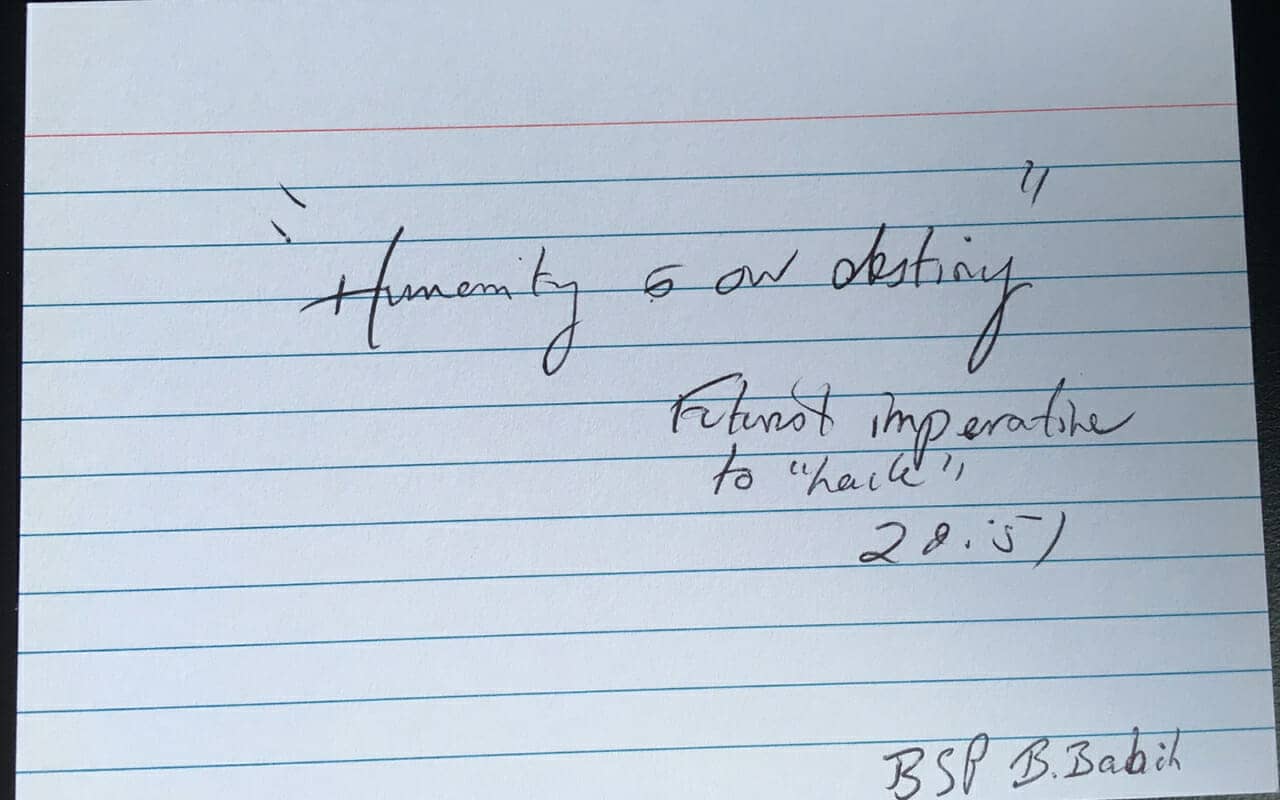
Step Four: Organize the Cards Alphabetically by Source
Some people like to get fancy. They buy or make wooden cabinets for their cards.
Apart from not having elastic bands melt into my cards, I’m not that fussy.
Instead, I organize my cards into shoeboxes and alphabetize them by title. So if my notes for a book called Nothing are in a plastic baggie, that will appear ahead of my notes from a book called One.
Now, you could easily organize your cards by author last name. I’ve done that in the past, but for some reason I now prefer to do it by title.
Alternatively, if I’m reading at home and the set of cards is very small, I will either:
- Store the cards in the book itself
- Not use cards at all, but write my own index on the inside cover
Either way, everything is accessible in the order of the information in the source, either by page number or by time stamp.
And it is very helpful that these cards are storable in a tidy manner. I don’t like to have random cards all over the place, except when I’m using them as part of a memorization or book writing project.
Step Five: Cull and Memorize with a Memory Palace
Let’s say that you’ve now got a bunch of cards that you’ve placed in one of more Zettelkasten. You know that you want to memorize the big details.
Go through the cards and separate out the ideas that seem most worth memorizing.
Then, start to place them in a Memory Palace. I often memorize ten ideas per Memory Palace to keep things direct, simple and as fast as possible. But sometimes I’ll use larger Memory Palaces.
The great thing about having the cards marked by title and page order is that when I’m done, all those ideas now go back with the individual bag of cards to which they belong.
Step Six: Revisit Your Zettelkasten Periodically
As you go about your learning life, you’ll keep adding more cards and memorizing the key points.
But it’s also useful to revisit the cards you’ve collected in the past from time to time.
If you prefer, you can use a dedicated system called the Leitner Box system. I’ve also shared how I use the Leitner system in detail.
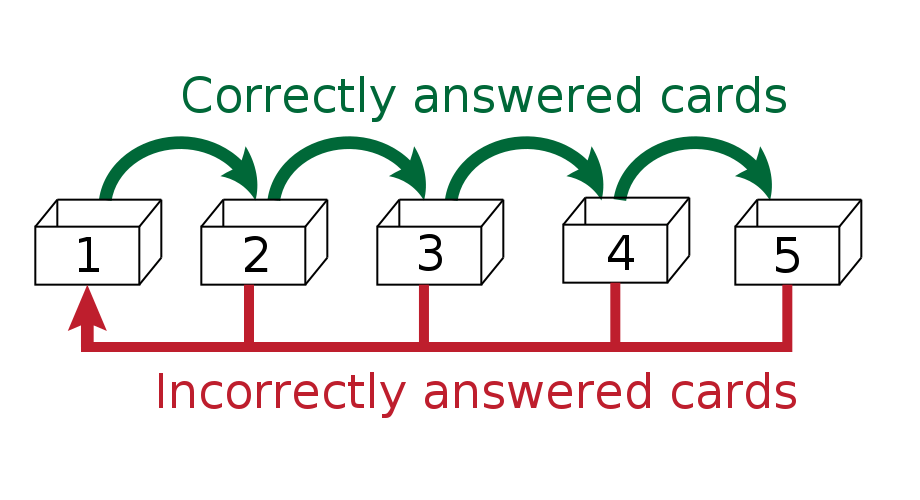
Basically, this approach applies the forgetting curve principle to the Zettelkasten system. Anki is generally based on this algorithm as well.
Personally, I don’t use anything as regimented as this, and that’s largely for two reasons:
- I use Memory Palaces and this normally allows me to be more casual about when I revisit my Zettelkasten
- I’m always using active reading tactics, activities that create a natural form of spaced repetition
- I use Zettelkasten in combination with how I complete courses rapidly
- I write frequently about the topics I study
When it comes to writing, this topic leads me to share with you yet another powerful learning strategy.
Step Seven: Summarize by Writing and Speaking
Although it’s fantastic to have many big ideas distributed across your easy-to-find Zettelkasten, true synthesis comes when you put the information into your own words.
You don’t have to go to elaborate lengths like building a blog.
Just 250-500 words per book will do. This simple process will stretch your recall of what you read and understood. And it will reveal any gaps in your understanding where you might like to fill in the blanks.
In addition to writing summaries, having ample conversations will also help you engage in the active recall that forms memory and understanding faster. You can also practice memorizing what people say in response while conversing them for extra results.
The Most Powerful Zettelkasten Example On The Planet
On this page, I’ve shared my process for using this powerful learning technique.
But do you know what will make for the best Zettelkasten example you’ll ever find?
The cards you create for yourself.
My simplified method may be too simple for you.
If so, there’s lots of information out there about how to make it more complex.
Or, you might want to simplify it even further.
One way or another, taking action is the ultimate way to reveal just how powerful this technique will be for you.
And if you’re interested in going deeper with this method when it comes to using a Memory Palace Network, grab this free course now:
It will give you the full rundown on how to set up properly formed Memory Palaces so you can connect your Zettelkasten cards to them quickly, easily and efficiently.
So what do you say?
Are you ready to explore note taking in a completely new way?
Enjoy the journey and please let me know how it goes!
Related Posts
- 5 Unconventional, But Proven Note Taking Techniques
Note taking doesn't have to be complicated. In fact, with these 5 note taking strategies,…
- How to Remember The Planets: A FAST & Simple Method
Need to know how to remember the planets? This article will help you memorize the…
- How Jessie Villalobos Got A Promotion - Magnetic Memory Method Review
Looking for an extensive Magnetic Memory Method review? Listen to Jesse Villalobos show you how…

